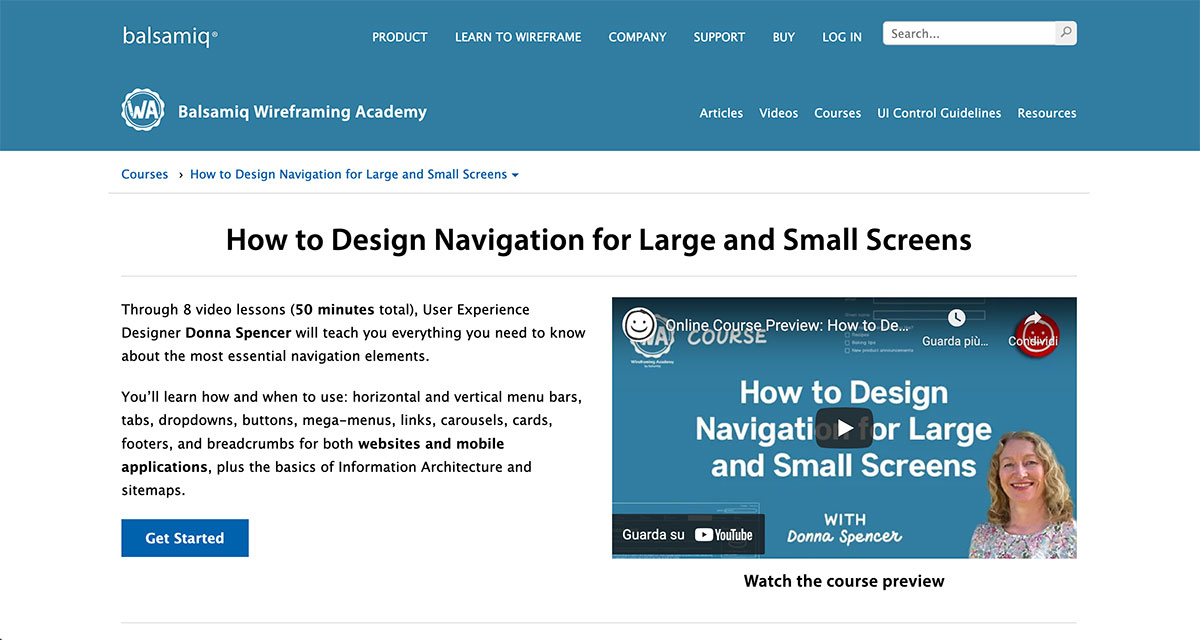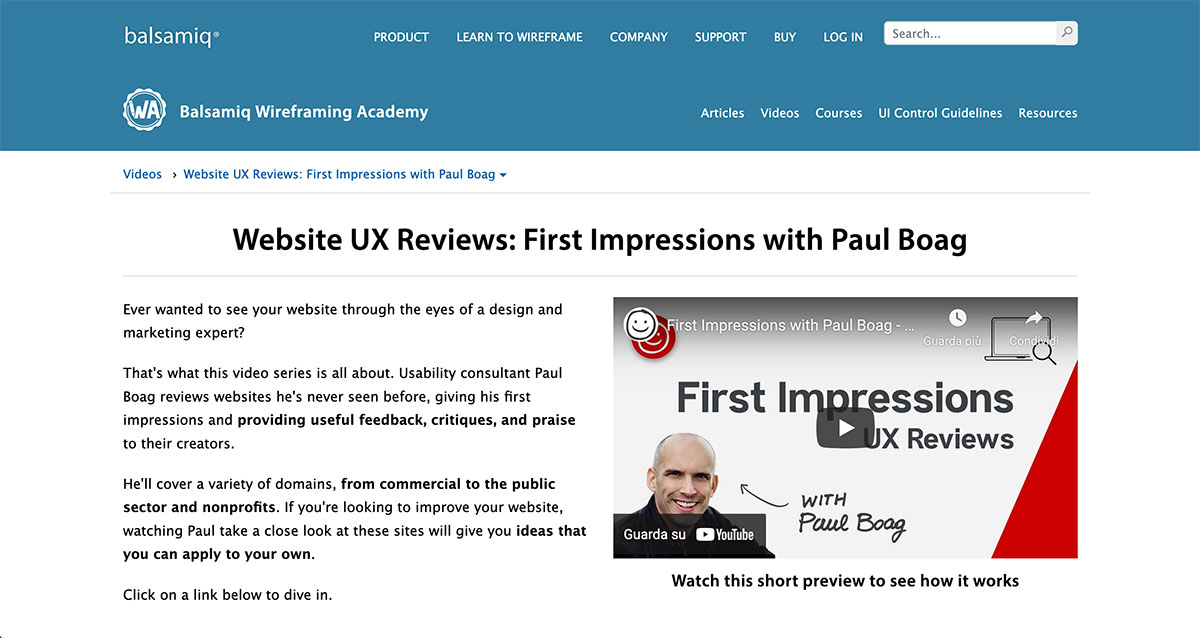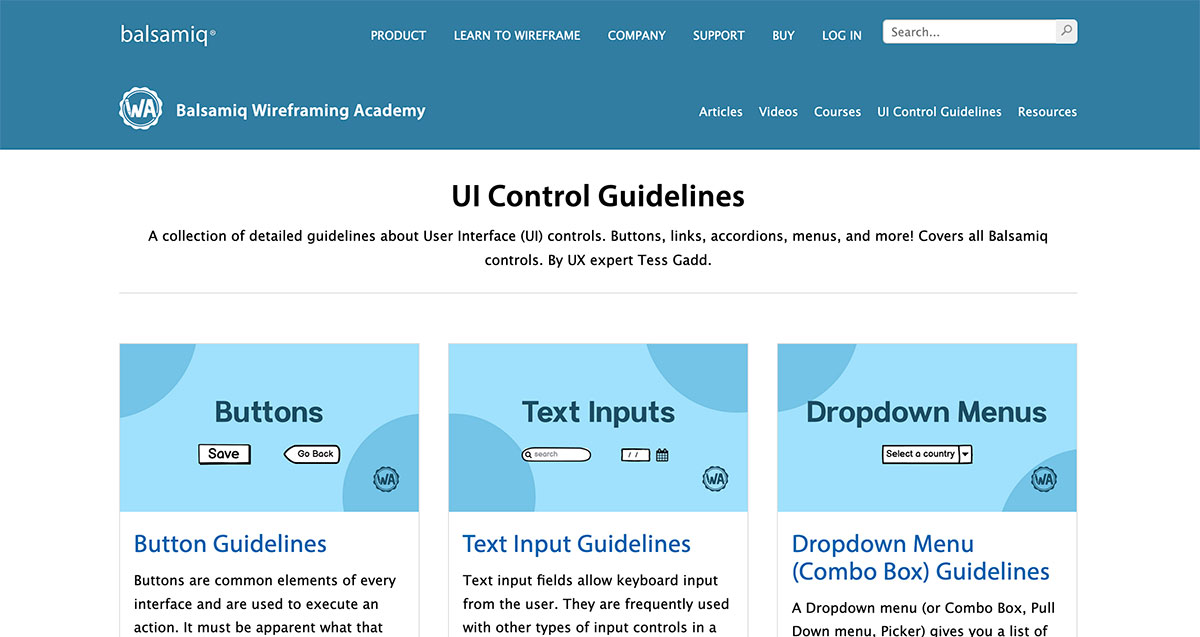How Balsamiq Outsources Content Projects
Balsamiq is a learning organization, so we tend to favor doing things ourselves instead of hiring outside contractors. Sometimes, we make exceptions — like the content projects we outsourced for our Wireframing Academy.
Why we outsource some projects
We do it for 3 main reasons:
- Speed. Balsamiq Wireframing Academy has an ambitious goal: to become the best place to learn about wireframing and UI design basics. It is a content hub, with articles, courses, guidelines, video series, webinars… The problem is, we only have one full-time writer on staff. Until we can justify hiring more writers, outsourcing is a great way to go faster and keep moving on different fronts.
- Focus. With limited resources, we have to be ruthless about prioritizing where we spend our time. So we focus on strategic initiatives, like our upcoming book about wireframing, a hugely time-consuming and important project. We choose between “Something we really want to do ourselves” and “Something we feel comfortable having someone else’s name on”.
- To make new friends! Outsourcing gives us the chance to meet great people in our industry! Working with them is another way to support our community.

When we consider outsourcing a project
At the moment, there are 2 scenarios that are obvious candidates for outsourcing for us:
- When the content project is big, but not too big. Something like a series of articles, or a full-blown course, but not a strategic project like a book.
- When the topic is complex, and outside our expertise. Hiring an expert to write about their specialty is very efficient, and results in great content.
How we pick who to work with
We have an idea and look for an expert
We have a long list of ideas for future content. When we decide the time is right to implement one, we ask ourselves who would be the best person to work on it.
We do some thorough online research and evaluate a small group of experts and freelancers by reading their work, watching their talks, seeing who they worked with in the past, and following them on social media.
Once we make our choice, we approach them about the project.
We have an expert and look for an idea
Sometimes, we go about it the opposite way! We think of someone we really want to work with and ask them to come up with a few topics that they could write for our audience. They are experts in their field, and they know their own strengths better than we do. We call this approach “hire the best racehorses, and watch them run”. 😊

Lessons we learned with practice
Do your best to find the right person
Working with an independent contractor can be scary, especially if you’ve never worked with them before.
There are at least 2 things you can do to minimize the risks.
There’s this powerful tool available, the internet: use it! Search online, see who they are, what they worked on, who they worked with, how they use the main social media channel, what people think about them…
The other thing you can do is something we learned the hard way: always include a small initial “test deliverable” in your contract, so you can see their work before committing to the whole project. This way if what they produce doesn’t meet your expectations or match your company values, or you simply learn that you don’t enjoy working with them, you can stop there. You pay for the initial work and save both parties a lot of grief and money.
Make sure to budget your own time
There’s a lot more to a content project than writing it. You still have to review the content, add it to your website, create graphics for it, promote it, and distribute it. There’s also a lot of project management involved: deadlines, emails, meetings, contracts, payments…
Even though outsourcing will make the whole project quicker, make sure to budget the right amount of time in your and your teammates' schedule for it, to avoid frustration and sometimes very inaccurate predictions.
When we planned for the biggest outsourced project we’ve ever worked on, we thought it would be quick and easy. How wrong we were! Moving 40 long and detailed articles, rich in multimedia and formatting styles, to our website turned out to be VERY time-consuming!

Consider material / IP ownership
If you’re going to outsource a project, you need to have a contract. There are many templates online, but pay attention to the Intellectual Property clause because it can be treated in two ways:
- Commonly, the contract specifies that the author transfers exclusive rights to the content to you. This gives you the freedom to do what you want with the content in the future. It’s as if you wrote it yourself.
- In other cases, or if it’s not specified, the author keeps ownership of what they created. This means that you’ll need their permission to repurpose it or distribute it in a different way. This is a bit cumbersome and limiting, but it can help you save some money on the contract.
How to save money when outsourcing
Hiring freelancers is usually less expensive than you think, and unless you’re creating a large amount of content, it’s much less expensive than hiring a full-time person.
We’re lucky to be in a position to do what we like, which is to pay our contractors very well.
If you’re just starting out, here are a few ideas to save some money:
- Consider non-monetary exchanges. Think of what value you can bring to them, and see if they’re interested. Avoid offering “exposure” or “a chance to get paid in the future”. Nobody likes spec work.
- Look for someone who really wants to create a big piece of content! They might be looking for a buyer to sponsor a course or a content series, and they may be willing to get paid less or even half of the cost just because, thanks to you, they’ll be able to do it!
- You can license existing content. The content already exists, so licensing it can be cheap, or even free. You won’t get SEO from it, but it might still be worth doing.
- Last but not least, you can save some money by leaving the material ownership to the author, as mentioned above.
Even if you might not be in a position to outsource content projects today, we hope you found some useful insights here. 🙂


